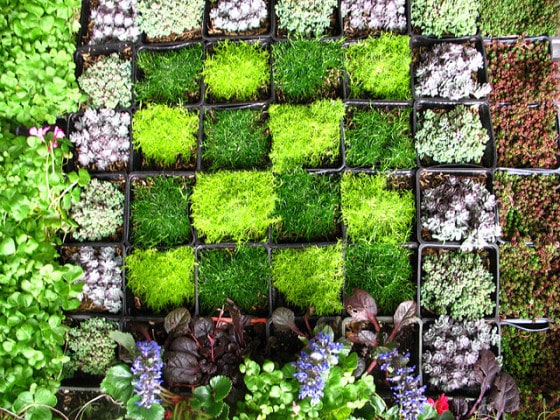
Nature Indoors: Why You Need Living Walls at Home and Work

Dangers of Indoor Air Pollution
First, let us start with the dangers of indoor air pollution. According to the Environmental Protection Agency (EPA), indoor air pollution levels are generally between two and five times higher than the pollutant levels found outdoors. In some instances, it can be as high as 100 times more harmful.
Here are some of the primary sources of indoor air pollution, as reported by Standard Heating:
With all of these potential harmful chemicals, toxins and pollutants lurking in our homes and offices, it is no surprise indoor air pollutants have been listed among the “top five environmental risks to public health.”
So, the question remains, if we are going to be spending this much time inside, then why aren’t we taking steps to minimize the harmful effects of indoor pollutants by bringing a little nature indoors?
Benefits of Vertical Gardens and Living Walls
Sure, you can lower indoor air pollution levels by adding a few plants to your home or office setting. The benefits would be far greater with an indoor living wall or vertical garden though. Adding living walls or vertical gardens into homes and offices can significantly reduce the levels of indoor air pollution, as well as have countless other benefits to people’s overall health and well-being. Some of the main benefits associated with vertical gardens and living walls include:
- Natural stress reducer
- Life-enhancing aesthetics
- Increased production
- Improved mood and outlook
- Allows for better concentration
- Creates a healthier environment
- Alleviates mental fatigue
- Natural air filtration system
- Improved air quality
- Reduction in energy costs (helps keep area cool in summer and insulates in winter)
- Reduce noise levels
- Offer a sustainable food source
What Goes In a Vertical Garden or Living Wall?
There are many different materials which can be used to create a vertical garden or living wall. The purpose you have for the garden or wall will determine what goes in it. Some people might prefer succulents and various types of native plants, while others would rather have a more productive wall filled with herbs and vegetables. Ideally, living walls work most efficiently when plants with smaller root systems are used. Martha Stewart advises you to ensure your vertical garden or wall is filled with plants that have similar requirements for watering and overall care.
How to Add a Living Wall to Your Home or Office
If you are interested in adding a living wall or vertical garden in your home or office, it won’t take much. Just follow the steps in Greener Ideal’s infographic below, and you too could be enjoying the benefits in no time at all.
Sources:
EPA: Questions About Your Community: Indoor Air
Ambius: The Benefits of Living Green Walls
MarthaStewart.com: Vertical Gardens or Living Walls
Indoor wall image by The Blue Girl and vertical kitchen garden by Wicker Paradise via Flickr Creative Commons license.





Post a comment